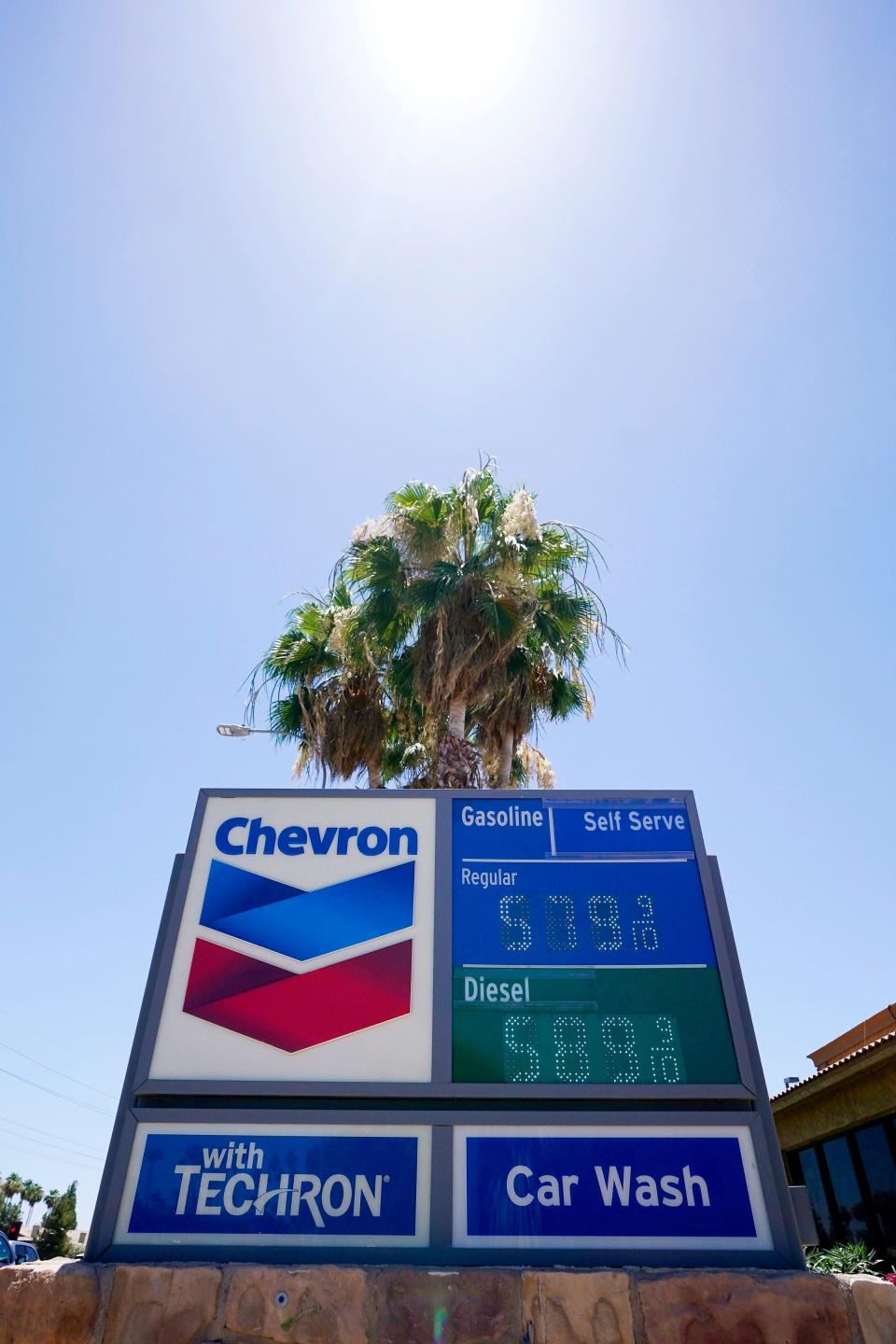I learned a painful lesson from inflation in the ’70s that’s paying off as things get ugly again

Inflation scarred me in my youth, triggering a lifetime of financial wariness – but also inspiring a series of savings tactics and debt avoidance that have created a measure of security as it soars again.
I’ve remembered how, as a young man more than 40 years ago, I thought inflation would forever keep financial security beyond my reach. And I fret for my son, working to establish himself today in expensive LA.
In 1980, when I landed my first newspaper job at $10,000 a year ($35,000 in 2022 dollars), inflation peaked at an annual rate of 13.55%. I couldn’t imagine being able to afford a brand-new car, let alone buy a home.
Inflation hits new high:Gas, grocery, and rent push consumer prices to historic levels.
Could inflation ease? Did inflation ease more in May? Food and gas prices probably surged but other increases are slowing.
I understood, too, that gasoline prices were core to inflation because transportation costs affect everything we buy.
The first OPEC oil embargo hit just before I got my driver’s license in 1974, and gas in my hometown hit 40 cents a gallon ($2.35 in 2022 dollars) the first time I filled up my car.
That 1963 Chevy Impala, incidentally, was bought with money from my first entrepreneurial venture, which involved catching plump fishing worms on humid, muddy, mosquito-infested summer nights and undercutting the sporting goods store down the street by 15 cents a dozen. I also had a fast-food job that paid $1 an hour ($6.50 today).
In other words, Mom and Dad weren’t buying that gas. I felt it.
Pain can be a good financial teacher, and that Impala’s awful gas mileage (10 mpg) led me to make fuel economy a top consideration in future car purchases, even when gas was cheap. My lasting takeaway was that oil prices are always volatile and cyclical.
Why gas prices are high: Gas prices surge again to record high but the driver is refineries, not oil prices
Not so manageable: ‘Paying the price’: Biden and top aides misread threat of inflation as warning signs gathered
A car-free life in the Motor City
My wife and I have had only one car at a time since 2006 and went for about 20 months living in the Motor City with no car at all. We used the streetcar, occasional hourly rentals and, rarely, rideshares. For each car we didn’t own, we saved about $800 a month on car payments, insurance (which is sky-high in Detroit), parking (we lived downtown), gas and maintenance.
The savings were less when we lived elsewhere but still significant. The cars we did own were Toyota Priuses with zero-interest loans. Today, we own a 2015 Chevy Volt that we bought used with cash.
I understand that this frugality is enabled by privilege and choice. It would be difficult with school-age children, and people lacking financial means aren’t easily able to structure their lives in a way that allows big savings on personal transportation.
My wife and I, as a decidedly middle-income couple, have been fortunate to be able to turn the financial wounds of youth into tactics that help insulate us from the latest economic turbulence.
Taking on debt: ‘I exhausted my savings’: Inflation has Americans turning to loans, credit cards to cope. Does it pose big risks?
Higher rates: Powell says Fed will keep hiking interest rates until it curtails inflation

No credit card interest payments
Chief among these is severe debt aversion. Loans, of course, come with interest, which is inflation’s accomplice in robbing American families.
By the time I could become a homeowner in 1987, my ex and I got an 8% 30-year mortgage that, at the time, was described as a deal. Interest payments over the life of that $68,000 loan would have been about $110,000.
My second (and final) wife likes to say, “Interest is something I earn, not something I pay.” In addition to not paying a penny of interest on cars during our 18-year marriage, we’ve paid our one credit card bill in full each month and accumulate points we generally use on air travel. We actually make money on our credit card.
These steps, along with smaller savings like cutting the cable and having a limited data plan, all serve the goal of avoiding interest payments. It worked well enough that we paid off our mortgage last year and are truly, 100% debt-free.
Double savings of avoiding interest
I think of avoiding interest as double savings or more. It’s similar to the concept of “negawatts” created by energy efficiency – energy not used is a resource, just like oil in the ground is a resource.
Interest not paid is money that can be invested – or available for fun.
And my wife and I don’t live like monks. We’ve visited 46 states during our marriage and enjoy comfortable, sometimes swanky accommodations. We dine out far too often and do see current inflation when we get the check. But, with our Volt, we rarely buy gas and are able to avoid most of inflation’s other ravages.
I hate its implications. I know from my past how it is challenging younger people and those struggling to get by.
I also know this won’t be our last bout ofinflation or high fuel costs. We can all learn from this pain.
Randy Essex is an editor with USA TODAY Money living in Omaha, Nebraska. Contact: ressex@usatoday.com; @randyessex on Twitter.
Subscribe to our free Daily Money newsletter for personal finance tips and business news every Monday through Friday morning.
This article originally appeared on USA TODAY: Inflation lessons from the ’70s that can help bring relief today




